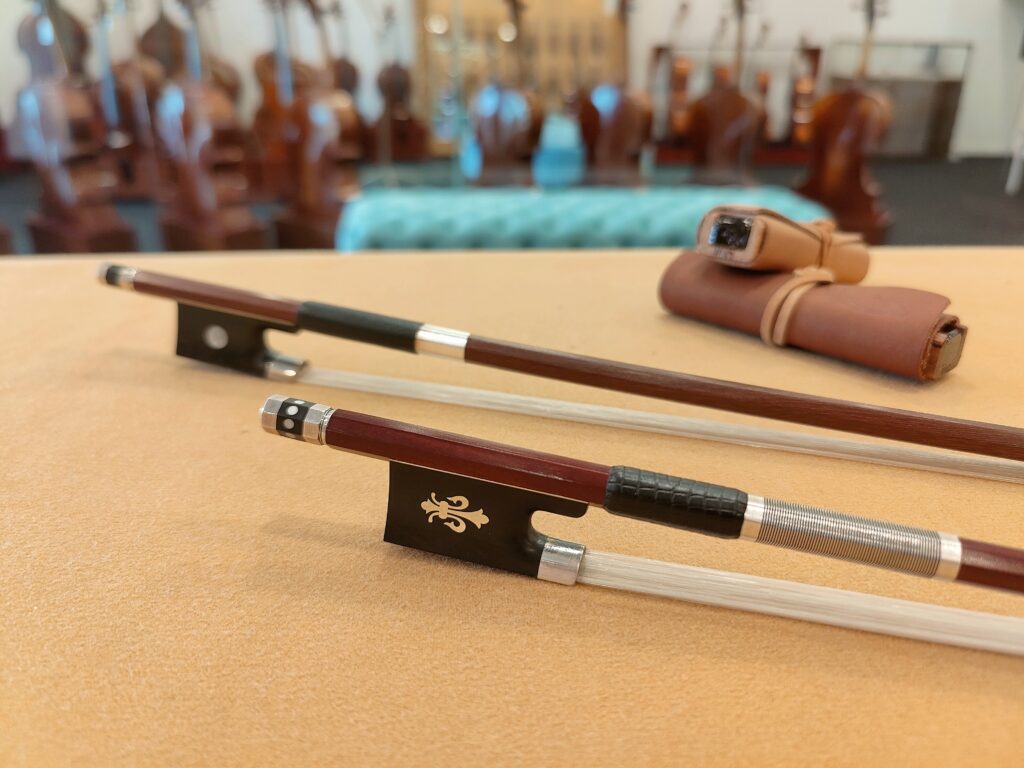
Pernambuco vs. Brazilwood – One in the Same
If you have been in the market for a bow at some point in your string journey, you may have come across some different wooden bows, typically made from one of two main types: Pernambuco or Brazilwood. In fact, these two types of woods are the exact same species of tree: Paubrasilia echinata, a tree native to the country or Brazil. Historically, the difference in terms of Pernambuco and Brazilwood for bow-making are unclear, though it seems to be a recent change – due to the plant becoming endangered, and a larger range in qualities and densities of wood becoming available through replanting efforts.
Simply put: we define the finest quality, and most dense timbers from this tree under the term “Pernambuco”, and all other, less dense timbers to be “Brazilwood”. In order to be considered Pernambuco, the timber must have come from a tree typically growing in harsh, alpine conditions, where its lack of sunlight and nutrients presents a stronger, and more flexible wood for bow-making. Because of this, pernambuco bows are typically more expensive than their Brazilwood counterparts. When shopping for bows, you should pick the one which you like the feel of best, no matter its quality. Pernambuco has been praised for its qualities in bow making, as the increased density allows for a quicker response under the strings – as such, for professionals and aspiring soloists, pernambuco is still considered the ideal bow-making material.
31/10/2023 – Rhys Williams, Violin Specialist, BMus (Violin Performance)
